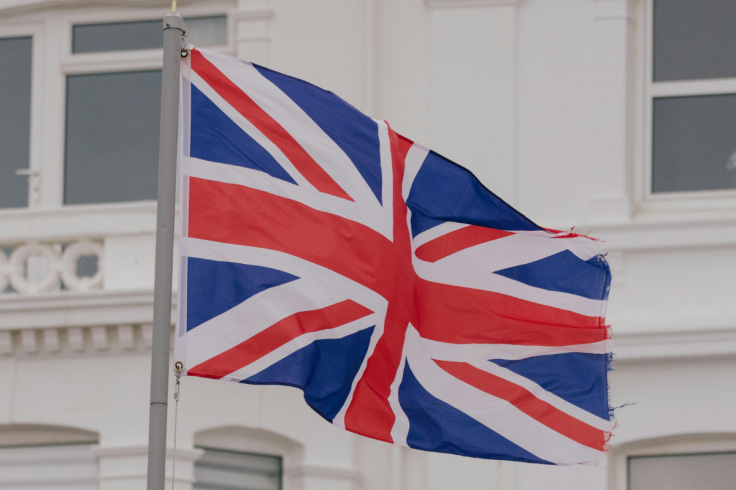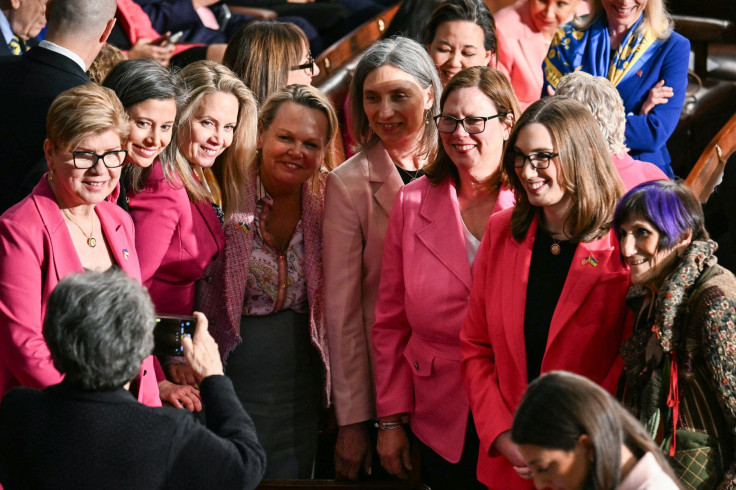What Are 'Pink Protests'? The Meaning Behind Women Wearing Pink At Anti-Migrant Rallies In The UK
Counter-protests and community groups have challenged the demonstrations, stressing solidarity and warning against divisive rhetoric

A new form of protest has emerged across the UK this summer, with women wearing bright pink at anti-migrant demonstrations. Organisers have promoted the colour as a symbol of concern for women and children, and many participants carry placards warning of threats to families.
Supporters say the so-called 'pink protests' represent maternal solidarity and a desire to protect local communities. Critics, however, argue that the use of pink is a deliberate tactic intended to make anti-migrant rhetoric appear more acceptable, and to frame immigration as a direct risk to British women and girls.
The growing visibility of the movement has sparked debate over the use of symbolism, underlying motivations, and the ways far-right narratives take hold in local areas.
Symbolism and Slogans
At recent rallies in locations including Canary Wharf and Epping, women and children stood out in pink clothing while holding signs such as 'Save our kids' and 'Protect our girls', The Guardian reported. Police officers and witnesses told Sky News that some demonstrators also wore Union Jack accessories or T-shirts emphasising they did not see themselves as part of the far right. Organisers, such as campaigner Lorraine Cavanagh, told GB News that the displays were intended to show maternal concern rather than extremism.
Criticism and Far-Right Links
Anti-racism groups and policy researchers have warned that the protests may serve a different purpose. Frances Ryan, writing in The Guardian, argued that the demonstrations draw on long-standing stereotypes portraying migrants as sexual threats to women. Police have also expressed concern that far-right networks are exploiting the symbolism to mobilise larger crowds and to provoke unrest. Reports have highlighted particular tensions in towns such as Epping, Norwich and Liverpool, where local authorities say they are working closely with community organisations to monitor the situation.
Community Response
Not all residents have welcomed the demonstrations. In parts of Kent and Merseyside, counter-protests have been organised by groups such as Stand Up to Racism, along with local refugee support networks. These events have emphasised solidarity and sought to counter what organisers describe as divisive rhetoric. Local councils have also appealed for calm, stressing that debates over migration must not undermine community cohesion.
National organisations, including faith charities and migrant rights groups, have urged politicians to address the underlying issues. They argue that public anger is being channelled towards migrants while wider concerns about housing, healthcare and employment remain unresolved. Commentators have suggested that unless political leaders respond to these anxieties directly, movements such as the pink protests are likely to persist.

Broader Context
The use of colour as a protest tool is not new. Suffragettes in the early 20th century adopted purple, white and green to symbolise dignity, purity and hope. More recently, feminist actions such as the Women's March popularised pink 'pussy hats' as a statement of solidarity. In Mexico City, activists staged a 'Mexican Glitter Revolution' using pink glitter to highlight gender violence.
Against this backdrop, today's campaigners have turned to pink once again, using its associations with femininity, care and protection to frame demonstrations as grassroots and relatable rather than overtly partisan.
Once small gatherings, the pink-clad protests have become a prominent feature of anti-migrant demonstrations. Supporters call them maternal activism, while critics see an attempt to normalise hostility to migrants. As the Labour government faces pressure over asylum housing, the symbolism is likely to remain part of the wider debate on identity and belonging.
© Copyright IBTimes 2025. All rights reserved.




















